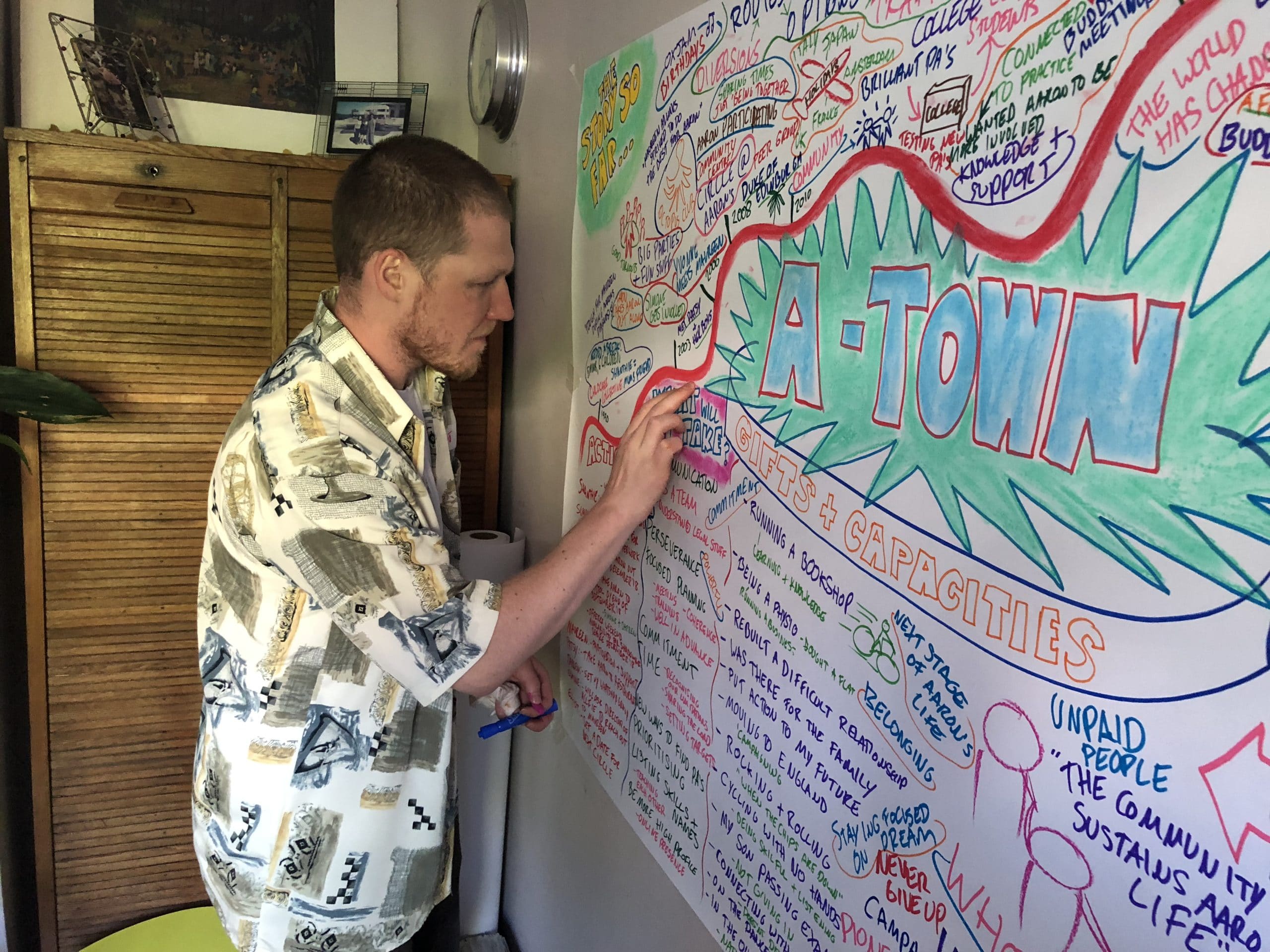Archive for January, 2020
‘Imperfection’ by Shagufta Khan
PATH for Unity Partnership appreciated
Person Centred Planning with Visually Impaired Children
Every child with VI is different and their vision requires different adaptations. For a PCR I wondered, for those children who require enlargements, or need to be close to visual stimulus, whether a ‘no seats’ arrangement could work, instead everyone stands and wanders around between the sheets throughout the meeting, allowing the child to move closer to whichever section is being discussed at the time. The same could work in a MAP of PATH if the sections or stages were split over different sheets to create more space for everyone to wander between. I would need to look back over my research findings but I do remember children saying they liked the informality of the PCR, created by sitting in a circle (rather than at a meeting table) and with the music. A mingling-style meeting might feel even more dynamic and relaxed, which the children seemed to appreciate. Of course using larger visuals/ thicker pens/ specific colours could also be helpful as well as considering lighting, glare, reflection from whiteboards/ shiny paper.I wondered about using the MAP tool with a registered blind child. We have a lady in the office who creates braille resources and I thought of asking her to have the MAP headings on a sheet of paper to reflect what was on the wall. The child could refer to this so he could see where we were in the process. I also thought of using objects of reference to serve the same purpose, which would also be a visual cue for the whole group but I would ask him to hold it for me to show everyone what stage we were on (in fact he could do the job of raising it up in the air if he thought discussions were getting off-topic!)! I’m just a bit stuck on recording the discussions. If I do a visual on the wall, as usual for everyone in the meeting to see, it feels like he is excluded somehow, unless I talk through what has been drawn regularly for him. Julie White, Educational Psychologist, Cambridge
Community Engagement Research and Development Project – Final Report October 2019
Community Engagement Research and Development Project based in Gloucestershire – well worth a read. October 2019. PDF copy in link below: Community Engagement Research and Development Project – Final Report October 2019
SENCO Award Nottingham Trent University
Anxiety – understanding and including children and young people
In this practical workshop session we will explore ways of including young people of all ages who experience anxiety some of whom may well be on the autism spectrum. The session will be values based and practical and will aim to allow the sharing of experiences and good practice as well as promoting innovative approaches to inclusion through the design of best practice.
New training day in new year – Including children with Anxiety
The Good Life?
In Person Centred Planning we are passionate to pursue and plan for a good life for the child or young person who is the focus of our efforts. This contrasts with attempts to provide effective provision to meeting Special Educational Needs that is so central a task in the ‘medical model,’ service centred world most of us work in or bring our disabled children up in.
But what is a good life?
We learned from ‘Beyond Welfare’ the importance of:
- Money
- Meaning
- Friendship
for communities and these certainly make sense for individuals.We have used the pursuit of these principles as a central way forward with our Community Circle work around the UK.
Going way back to the ancient philosophy days of Aristippus and Aristotle and the study of well being we discover:
- Hedonism – the pursuit of pleasure
- Eudaimonism – life in accordance with ones virtues/seeking meaning/engagement with the existential challenges of life
Person centred planning with young people who cannot speak
Many practitioners worry about using group person centred planning approaches such as MAP or PATH with young people who cannot use their voices to speak. We are always encouraging and optimistic about this way of respectful planning irrespective of labels such as autism, profound learning difficulties, severe language or learning needs and so on… We have learned that with the right conditions present we can create a plan based on dreams and achievable goals that are meaningful and true for the young person at the heart of this way of working.
The conditions need to include the following:
- the right people are present who the young person knows to be loving family, people who really care or love them, or friends
- the facilitators must watch and listen and allow the young person to communicate however they may wish to
- the facilitators must watch and listen really carefully to those who are really close to the young person
- a safe space in which the young person is comfortable and ideally they have chosen
The young man featured in this video who had been wonderfully included at Seely Primary in Nottingham was helped to feel comfortable by the presence of his mum, best friend and favourite TA – plus the graphic was shaped like a train and he loves trains! Those who know him well were surprised he was able to stay in a meeting for 2 hours and that he did not cry! He used no words but the plan was a wonderful reflection of both his interests and possible contribution to the world.
Read some of the wonderful poems written by a amazing group of young people who do not use their spoken voices – they like to refer to themselves ‘Quiet Riot’ – need we say more – they can teach us so much – if we listen deeply. Their unique book can be found in our store – Quiet Riot Collected
The title of Maresa MacKeith’s remarkable book that we are also proud to publish reflects the importance of the above conditions ‘Taking the Time’
Learn more about person centred planning at our 2 day training event in Nottingham 19th and 20th March 2020
Nottingham PATH training in March
- 1
- 2



